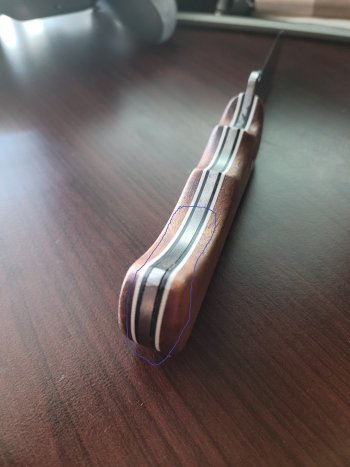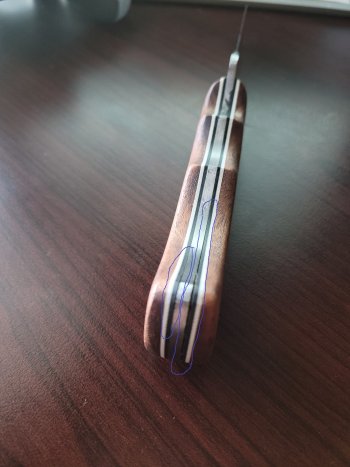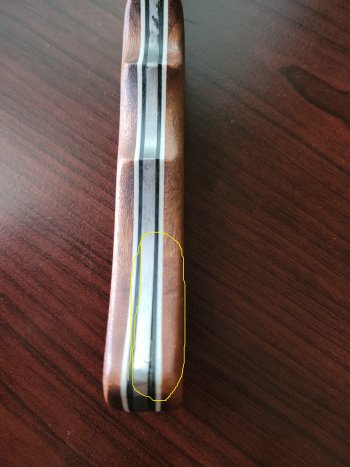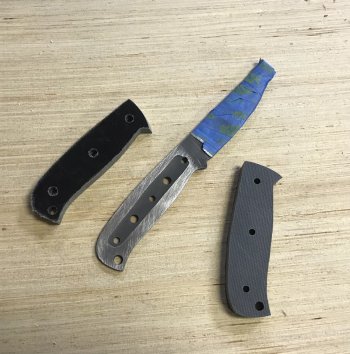wilson0728
Member
Noticed a problem recently with a few knives that I've been working on. The handle material seems to be separating from the steel. I noticed it with two that I was working on shortly after putting them together (a few days) and then saw it recently on one that I did a couple of months ago where it's starting to separate.
The material is G10 liners along the tang and I have been using either BSI 5-minute epoxy or JB Weld 5-minute epoxy.


Any thoughts on what I might be doing wrong? Is it something that I'm doing or using? Could it be something with the wood?
Thanks
The material is G10 liners along the tang and I have been using either BSI 5-minute epoxy or JB Weld 5-minute epoxy.



Any thoughts on what I might be doing wrong? Is it something that I'm doing or using? Could it be something with the wood?
Thanks

